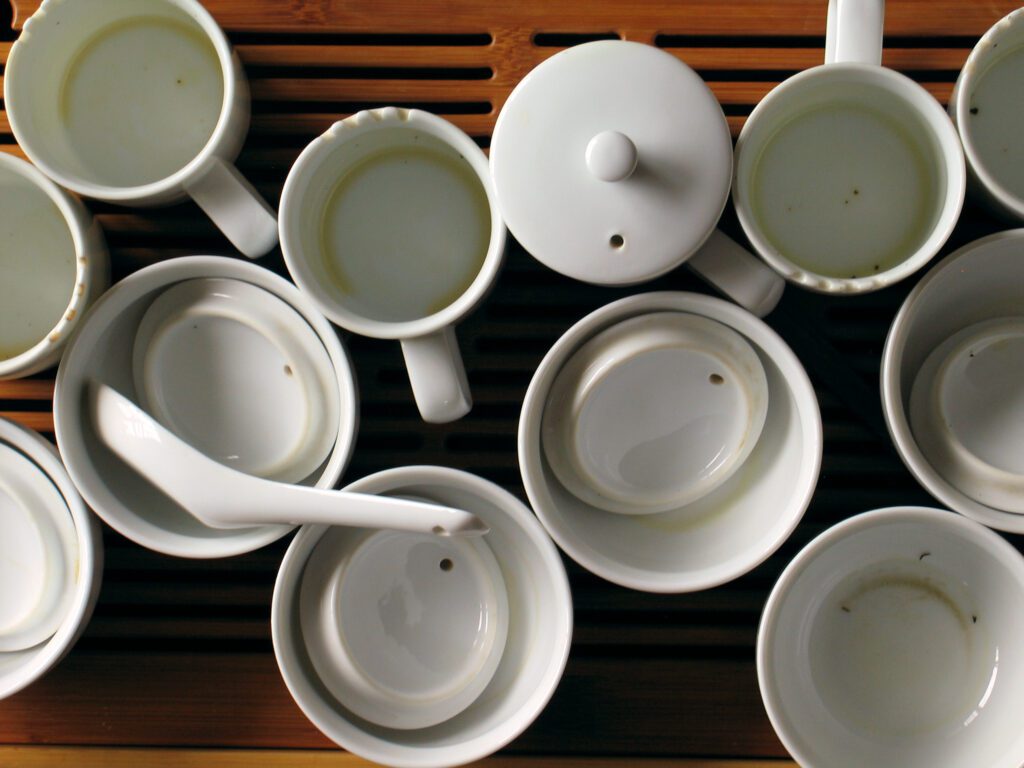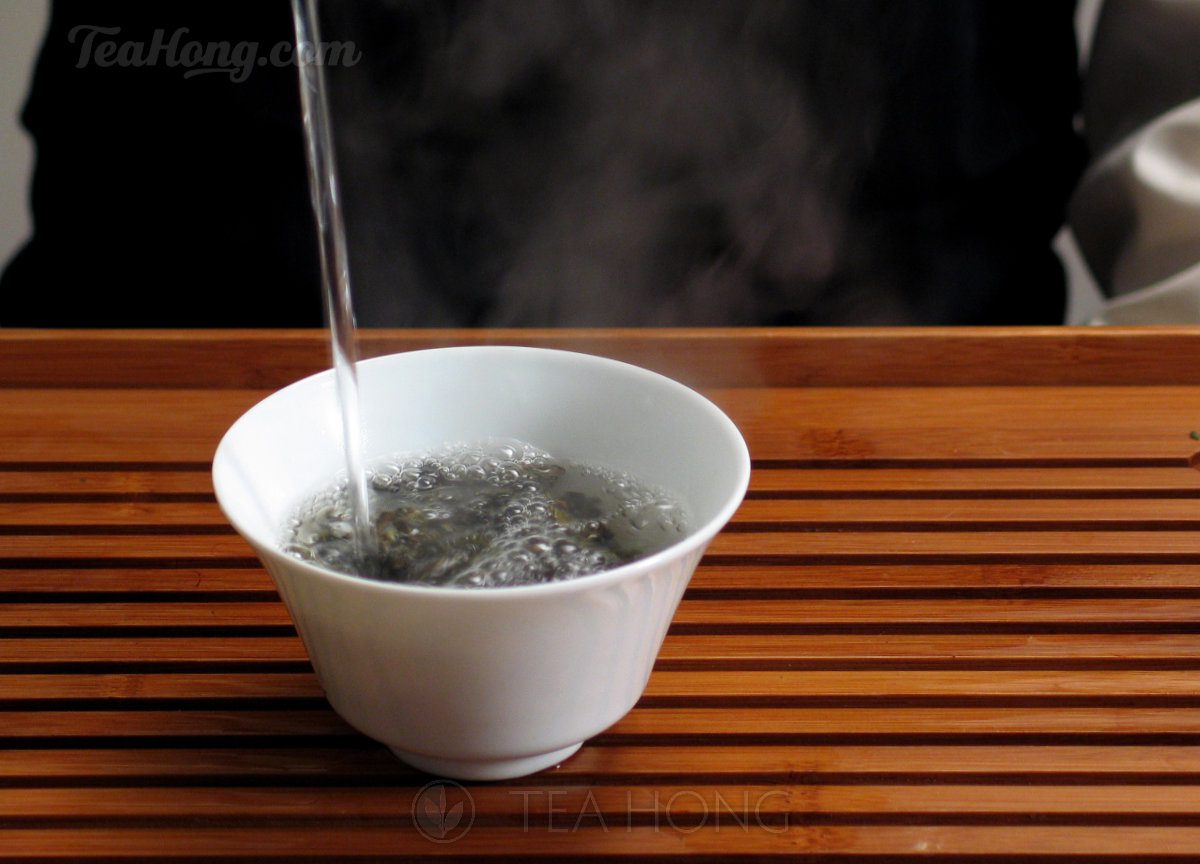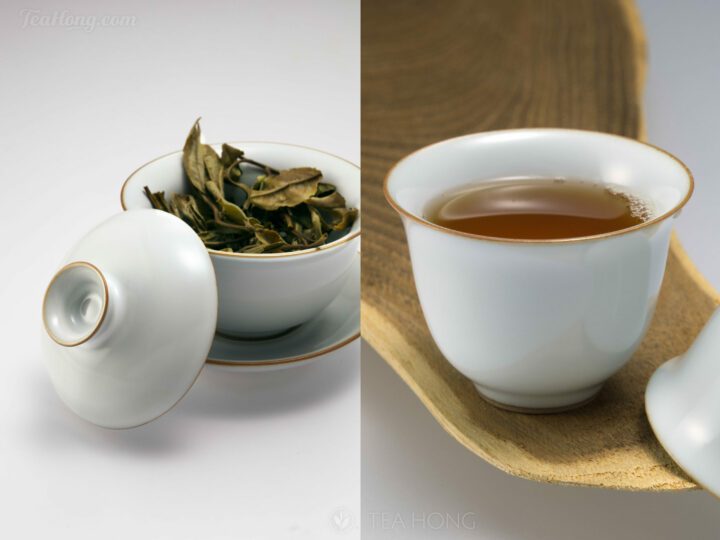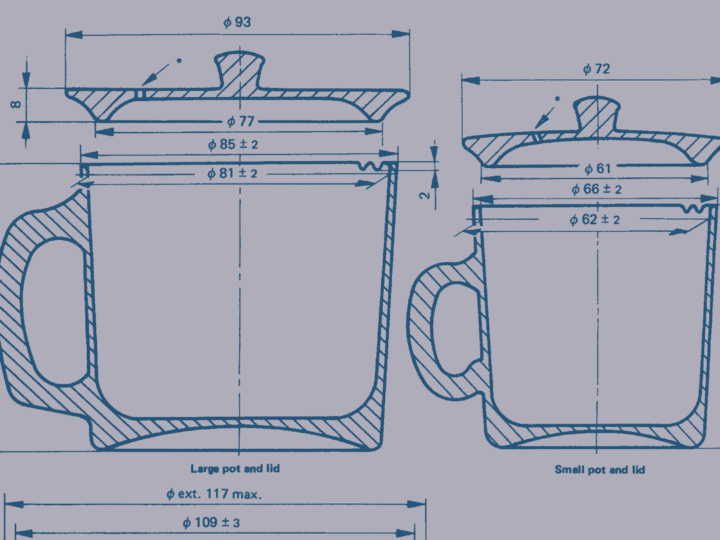What makes the taste of a tea?
The taste of a tea is the combination of its many tones, accents and tints. Like a good wine, or beer, or scotch, or saké for that matter, a good tea is one that strikes a unique balance between these many notes, in addition to, of course, its characteristic aroma and texture.
Other than the usual understanding of tea contents of caffeines and phenolic compounds, there are also pectins, amino acids, carbohydrates, minerals and hundreds of volatile substances. The quality of a tea predetermines these contents. They are the substances one works with to create the taste in the cup.
Unlike its alcoholic counterparts, the “brewing” of tea is usually done by the drinker. Although the leaves of a well produced tea predetermines the contents in the leaves, it is the nuances in making the infusion that manifests the potential of the tea. In another word, the enduser determines how the tea tastes. How well he/she “brew” the tea matters.


Honey Orchid Supreme too bitter?
We get questions from customers all the time. A recent one asking for help is quite interesting. I personally reply the query with some directions for solution. I guess some readers may benefit from this answer so I am taking the liberty of sharing part of this conversation:
Firstly, his original email (partial):
I have enjoyed most of the Dan Congs (Phoenix dancong oolongs) from my recent TeaHong delivery very much, especially the Ba Xian (Eight Immortals)! (He’s using the romanisation of the original names; that means he’s really into tea)
However, I am having a bit of trouble with the Honey Orchid Supreme since for some reason I always get bitter notes in my brews of that tea. By base infusion is 4-5g in a 140ml Chaozhou clay pot and brewed at 90 degrees for about 30 seconds. Even when I reduce the temperature or shorten the brewing time I still get bitterness in the tea. Do you have any further suggestions what I could try…
My answer (partial):
Indeed there is a distinct bitter note in Honey Orchid particularly in the supreme version. Some people regard it as a most important part of the taste balance and some others do not like it. There are ways to reduce its dominance.


To some people, these hand-thrown, red-dyed Chauzhou clay teapot may look the same as Yixing teapots. They are, by their physical nature and capabilities, very different.
The Chaozhou style teapot is certainly not the best tool for using short infusion time. The very act of pouring through its small spout inevitably becomes part of the brewing time that is difficult to manage. Additionally, the relatively significant portion of infusion time during the pour with reduced liquid and thereby a dramatically increased leaf to water ratio can hardly contribute to desirable infusion results. A Chaozhou clay pot is not the best material for the tea either. The pot was intended for the old school Chaozhou gongfu tea style which is another topic of discussion. Before you graduate to that, I advise putting that pot aside and choose either a porcelain gaiwan, or a taster’s mug for a preference of short infusion time. If you do not mind waiting, a longer infusion time is actually much easier to manage the resultant taste profile. Then a genuine Yixing teapot can be used. I personally prefer a gaiwan, but since I like that bitterness there, so maybe you would want a Yixing pot to take away some of that.


Decanting is much faster using a gaiwan. The vessel is therefore much more suitable for shorter infusion time.
Longer infusion time helps
The easiest way to reduce that bitterness is to use a longer infusion time, and a smaller leaf to water ratio, say 2 g to 150 ml for 5 min at 90°C. Blanch the leaves first. Adjust the variables according to your personal preference.
If that’s still too bitter, use a genuine Yixing teapot with a thicker clay. Do not use zhu-ni, duan-ni, or other fancy colour versions, use the good old purple clay or qing shui ni. Stick to that long infusion time principle.
For short infusion time, use a quick pour vessel
When using short infusion time, use a gaiwan or other quick pour vessels. 5g to 150ml is a good ratio to begin the testing with. When filing the vessel for either blanching or infusion, always avoid pouring into the centre of the leaf volume, circular around it instead. Count the pouring time as part of the infusion time. If 30 sec still gives you too much bitterness, reduce to as little as 15 sec, but increase the leaf amount.
Water matters
Another factor is water quality. A good drinking water may not be a good water for tea. Total mineral contents should be maintained at around 100 to 150 PPM, while a lot of bottled water has 200 or over. Some minerals do interact with tea to form nasty tasting small particles. I had some very bad experiences in parts of the world that the water supply is loaded with TDS. For a stronger tea like Honey Orchid, the effect is greatly exemplified. Softer teas are less affected.


The quality of water has a decisive effect on the final infusion result of a tea
His later replied:
Thank you very much for your detailed answer! It really helped me to a lot. I’ve experimented a bit during this weekend. It turns out the water was the main issue. Using water with less minerals dramatically improved the taste of the tea. Increasing the infusion time also made the tea much better!
I also run a sequence of A-B testing with my purple clay pot and indeed this tea does taste less bitter and softer with the Yixing pot.


There are a few ways to get the best from a tea
After thoughts
Most of the days I have at least one large cup of strongly infused dancong, in addition to other teas prepared to various strengths in various quantity, besides my obligation in tea tasting. Dependent on which variety, 3 to 5 g of leaves is infused for 5 to 7 min in a 220ml vessel, completely filled, using near 95°C water.
I know this is a far cry from those trendy quickies one may see on the internet.
The first impression of gongfu tea I had when I was a teenager was the tiny cup of extremely intense, challengingly bitter and yet surprisingly addictive classic style Tieguanyin served in Chaozhou restaurants in Hong Kong before and after the meal. This is a far cry from the watery liquid they serve when one walks into a teashop in China in the same name as gongfu tea.
Bad coins drive away the good.
Don’t get me wrong. Doing 15 sec rounds is okay with me, provided that the tea selection, setup, variables and other context are appropriate. As a demanding taster and having tasted quite a varieties of tea prepared in a variety of ways, I do not think indoctrinating any style or method is appropriate for dedicated tea drinkers. The ultimate goal, however, is for them to get to experience the full spectrum a particular tea has to offer. To make an enjoyable liquor from its leaves really is still an art form that is not only dependent on the setup and the variables, but also the changing taste preference of the individual. And how experimental one is spirited with.
I can make a strong cup of Tieguanyin much more balanced in taste than those in old Chaozhou restaurants half a century later now, but still prefer it not so strong. I have a number of other favourite teas for really intense brews, such as my lovely Phoenixes.


A properly infused cup of a fine tea is a luxury that I can indulge myself in everyday
Related reading:
- Tea Guardian: About Water
- Tea Guardian: Yixing teapots: An introduction
- Tea Hong: Yixing teapots: Clays
- Tea Hong: International preparation standard for tea tasting
Comments (5)
-
To my own experience, less leaf and longer time in glazed vessel is best when I am getting to know the tea. Glazed stoneware is what I really prefer over thin porcelain for longer approach due to better texture of the resultant liquor.
When I knew the tea better, especially with deeper roasted oolongs, I choose the old-school Chaozhou Gongfu Tea to brew the super potent, strong, exceedingly challenging bitter tea and enjoy small sips. This time the tiny Chaozhou teapot really shines since it did not screen much of the bitter and potent aspect of the tea and renders all the potency of that tea. Maybe it’s like I prefer espresso over pour-over coffee with darker roasted ones.
-
Oh yes! I agree with you that less leaves, longer time in a glazed ceramic is the best way to get to know a tea. That is similar to the international tea tasting approach. 2g to each 100ml for 5 or 6 min. And I most definitely enjoy many of my teas brewed to the “espresso” style for that intense kick and really deep sensation. However, I much prefer a Yixing teapot for so doing in some of the teas, especially deeper baked ones and not so matured shengcha. To smooth out the roughness of these teas in a strong brew situation, the intricacy of the tea shines. And in much better tactility or as people put it, mouthfeel. Just like a really good espresso should be. Or I’d say a really good matured cognac too. The stimulating bitterness is still there, but girdled and actually enjoyable.
-
I have a follow-up discovery after getting a genuine Yixing teapot in small-ish size (around 110 mL) with thicker wall than all of my Chaozhou pots. The Yixing pot significantly gears the liqour’s profile to be smoother and less bitter, shift the dominance of aroma to the aftertaste and I can sense more nuances of the tea I knew. The differences are greater with longer infusion in later steeps (I tried to steep as many times as possible for the sake of testing).
Now I am tempted to find genuine quality Yixing pots in the size less than 80 mL but still no yield.
-
-
-
Initially, I used a 130ml Yixing Old Kui Huang Zhuni teapot or a 150ml Yixing Da Hong Pao Zhuni teapot to brew 2g of Honey Orchid Supreme from Tea Hong. First brew was at 90C for 5 mins; followed by 2nd brew at 90C, 5 mins; and 3rd brew at 90C, 5 mins. All 3 brews deliver an exquisite, lingering taste and lovely bouquet. A 4th brew at 95C, 6 mins is still good but it is noticeably weaker. I pushed it to a 5th brew at 95C, 8 mins.
As Honey Orchid Supreme is such a delicate, elegant and aromatic tea, I used a different teapot for my 2nd order of the tea from Tea Hong. I used a 125ml Ruyao teapot which does not absorb/mask or lessen/highlight the taste profile of tea leaves. Like the gaiwan, the Ruyao teapot delivers Honey Orchid Supreme in all its splendour.
I used filtered water to brew my tea.
-
That’s a very good discovery. Congratulations!
When we prepare Phoenix oolongs for our own daily drinking, we do not use infusion vessels other than those of porcelain or glazed ceramics. As you have already found out, the many delicate characteristics of this group of teas are best manifested in such wares. However, there are people whose taste sensory may react more rigorously to certain tones, such as those of bitterness or astringency. For them toning down these notes with the help of a good Yixing ware is a choice.
There are also parts of the world where the mineral contents in their tap water are so high that most household filtrations do not suffice. Reverse osmosis maybe an answer but the current technology basically deplete virtually all mineral contents in the water. We have received emails from customers saying that they rely solely on bottled spring water for tea. I personally hope that a more advanced water filtration technology will be available soon to free these people of the plastic burden.
On the other hand, there are also regions in this world where the tap water is so good that one does not even need to use a filter at all. People there are so lucky. Many years ago, I helped a famous chef in Japan to setup a tea routine in his new teahouse restaurant and found that their tap water could make tea better than an expensive professional filter system they have installed there. In another occasion where I tried to set up a tea demonstration in France, none of the filters I brought could tame their tap water. The infused liquor was clouded with small dark-coloured particles and it tasted like a different thing. Luckily with the help of some locals, I found a bottled water that is good enough to make tea with ( most in France aren’t ) and the supplier was willing to donate my week’s supply for free.
These are two extreme samples. They reinforce the ancient idea of the importance of water in tea. And remind me how lucky we are to have a supply of tap water of manageable quality.
-
Leave a reply
You must be logged in to post a comment.







